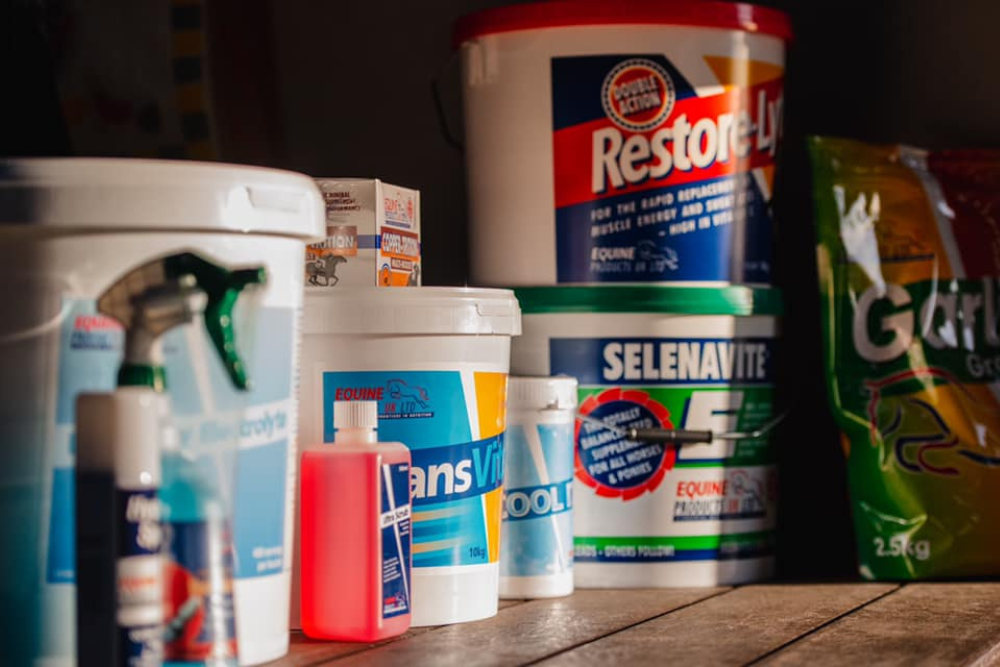Getting The Best For Your Horse: How To Compare Supplements

Written by Briony Witherow MSc RNutr. FHEA
In this month’s blog we are looking at how we can compare supplements to make informed decisions for our horses.
When comparing supplements, an understanding of how the statement on the label/packaging relates to the actual content of an active ingredient is essential. However, the variability in how product details are stated can make supplement comparison very challenging. Table 1 gives examples of hypothetical joint supplements and illustrates how the use of units of measurement and over-reliance on percentage or concentration, can mislead.
Table 1: Actual Content versus Information supplied on labelling.
|
Product |
What the label says… |
Actual Content Fed (g) |
Actual Content Fed (mg) |
|
A |
50% Glucosamine (500g/kg) Feeding Rate 12g/day/500kg |
6g |
6000mg |
|
B |
Glucosamine Content 40% (400g/kg) Feeding Rate 30g/day/500kg |
12g |
12000mg |
|
C |
Glucosamine content 100g/kg (10%) Feeding Rate 80g/day/500kg |
8g |
8000mg |
|
D |
Glucosamine content 60000mg/kg Feeding Rate 40g/day/500kg |
2.4g |
2400mg |
|
E |
No fillers 100% Glucosamine Glucosamine 1000g/kg Feeding Rate 10g/day/500kg |
10g |
10000mg |
*Be sure to make the distinction between scoop size and actual amount fed for example a 50ml scoop may only contain 25g of supplement.
From the table above, at first glance you may think that product D contains the most glucosamine, as the product label is using milligrams as the unit instead of grams. Likewise, you might assume for product C, because it has the greatest feeding rate (80g per day) that it would deliver more glucosamine, but this is not the case. This highlights the need to not only note the units of the active ingredient, but also the feeding rate.

Step by Step - how to compare supplements:
- Concentration of active ingredient. Note the units used and convert so that these are the same across compared products.
To convert a percentage to grams per kilogram, you need to multiply by 10. For example, 12% would be 120g/kg. To convert from milligrams to grams divide by 1000 (or multiply by 1000 to change grams to milligrams).
- Feeding rate. Be sure to consider the feeding rate. Note that many companies will provide the amount of active ingredient delivered in a set feeding rate, but this may have to be adjusted for the size of the horse or workload.
Once we have the concentration of the active ingredient per kilogram, we can then use this to work out how much is delivered per gram (by dividing by 1000) and then multiply by the number of grams fed. For example, in product E, we know that there are 1000g of the active ingredient per kilogram fed, we can then divide this by 1000 (there are 1000g in a kilogram) and then multiply it by the number of grams fed. 1000 divided by 1000 is 1g, we know that 10 g are fed, so 1g multiplied by 10 = 10g of active ingredient.
- Consider quality. Depending on the active ingredient, the format and quality may impact how much is required to be effective.
- More is not always better. For active ingredients where research has indicated a minimum effective quantity per 100kg of body weight, providing more than this may not have any benefit and may just end up being more costly. When comparing supplements which have research to inform their use, be sure to check product labels against these values.
A good example is glucosamine, where research has indicated minimum effective feeding rates. Research indicates 0.02g/kg bodyweight is required where glucosamine is fed in isolation (10g for a 500kg horse) or lower rates when fed in combination with chondroitin (5g glucosamine hydrochloride and 1g of Chondroitin Sulphate for a 500kg horse).
Take home points:
- Transparency is key – if there is insufficient information about the product, identification of key active ingredients and therefore comparison will not be possible.
- While comparing quantity is often key, don’t forget to consider other factors such as quality and format which can also impact effectiveness.
- Remember that benefit is not always achieved with hypernutrition – more is not necessarily better.
